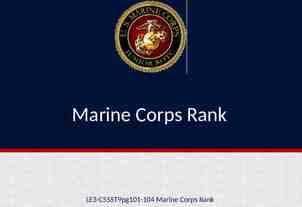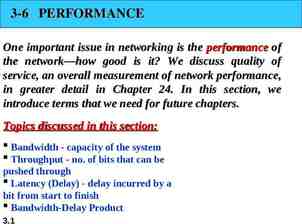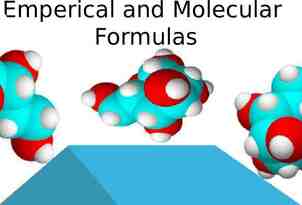Health Maintenance Practices Nevada Health Science
30 Slides660.00 KB
Health Maintenance Practices Nevada Health Science
Healthy Lifestyles “We are encouraging Americans of all ages to live healthier lives. Healthy living can prevent diseases and certain disabilities, and it can ensure that today’s older persons – as well as future generations – not only live longer, but also better.” – Josefina G. Carbonell, DHHS
We Are Responsible For Our Own Health! Just one hundred years ago (1900), the major cause of death in the U.S. was attributed to acute, largely infectious diseases such as smallpox, tuberculosis, diphtheria, rheumatic fever, tetanus, and polio. – These were illnesses generally beyond the control of the victim. – Life expectancy in 1900 was 47.3 years.
We Are Responsible For Our Own Health! No longer are we dying from these diseases. In fact, the acute illnesses of 1900 now account for less than 2% of health concerns, and some of the illnesses have been eliminated. Average life expectancy today is nearly 77 years.
We Are Responsible For Our Own Health! Today, the major cause of death and disability is lifestyle-caused illnesses that are generally preventable through proper attention to diet, physical activity, smoking elimination, seat belt usage, and periodic medical screenings. In fact, personal health practices are the vital and paramount component of preventive health.
We Are Responsible For Our Own Health! Neglect of self is the primary cause of such illnesses as: – Coronary heart disease – Cancer – Diabetes – Traffic fatalities – Lung disease – Liver disease – High blood pressure – Stroke – Osteoporosis We can have a direct and positive impact on all of these. We are in charge of our own health!
Healthy Lifestyles Great improvements in medicine, public health, science, and technology have enabled Americans to live longer and healthier lives than previous generations. Chronic disease and disability are not inevitable. Many Americans fail to make the connection between undertaking healthy behaviors today and the impact of these choices later in life.
Healthy Lifestyles Wellness is determined partly by lifestyle choices. Studies by the National Institute of Aging show that: – Healthy eating - Moderate alcohol use – Physical activity - Safe environments – Mental stimulation - Social supports – Not smoking - Regular health care – Active social engagement are important in maintaining health and independence.
Other Factors Related to Wellness Fitness: can prevent heart disease, hypertension, and lower back pain. Preventive care: including immunizations and health care screening tests. Spiritual health Safety: prevention of injuries and accidents, emergency preparedness, CPR.
Other Factors Related to Wellness Nutrition: prevent diseases like osteoporosis and cancer, proper nutrients. Tobacco Addiction Stress Management
Healthy Lifestyles As a society, we have come to depend upon the medical community to make us well, yet even with all of our technological advances, medical science can do little to get rid of or reverse the disease process once a person has been afflicted. An effective way to deal with some diseases is to prevent them from occurring, and changing lifestyle habits is often involved.
Health Maintenance Practices Become aware of the obvious and not-asimmediately obvious situations that trigger stress. – Minimize or avoid exposure to those situations. Establish good dietary habits. – Eat well balanced, nutritious meals. – Moderate intake of salts, fats, white sugar, caffeine, and alcohol.
Health Maintenance Practices Establish a pattern of regular cardiovascular exercise. – Contributes to a positive mental attitude. Avoid smoking. – Smokers are at a much greater risk of dying from heart disease, respiratory disease, and cancer. – There are no “safe cigarettes”. – Chewing tobacco and snuff should also be avoided.
Health Maintenance Practices Learn how to relax. – Relaxation brings to the body enormous restorative energy. – Getting enough sleep is also important. Develop and maintain social supports. – Feeling connected to family, friends, classmates, work colleagues, and/or to community, social, political, or religious organizations plays a vital role in the maintenance of one’s mental well-being.
Health Maintenance Practices Conflicts. – Expect conflicts to occur, but learn to deal with them in a head-on manner. – An unnecessary burden is created when conflicts are allowed to go unaddressed for too long.
Health Maintenance Practices See your doctor regularly for preventive care. – Preventive services are tests and/or advice from your health care provider, and can include the following: » Tests/screenings » Measurements » Advice about diet, exercise, tobacco, alcohol and drug use, stress, and accident prevention. » Immunizations. » Special tests at certain times in your life.
Health Screenings Regular health screenings and check-ups should begin with young children and continue through all of the mature adult years. Important health issues to monitor include: – – – – Weight Blood pressure Immunizations/Vaccines Bone density level – – – – – – – – – – Cholesterol level Blood glucose level Annual pap smear Breast examination Mammogram Testicular and prostate exam Good dental care Colonoscopy Vision and hearing Glaucoma/Cataracts
Health Maintenance Practices To take care of your health, you need to feel comfortable talking with your doctors and nurses. – Ask questions: if you don’t understand what they are saying, ask them to explain. – Tell providers your health history as well as your health now: mention family history of diseases and conditions; provide a complete list of medications you are taking, etc. – Follow up: Call the provider if you have questions or need more information after you leave.
Health Maintenance Practices Every day you have a chance to make good choices about your health. – Set small goals instead of large ones that you won’t be able to meet. – Reduce your risk for heart disease. – Watch your weight. – Eat right. – – – – Stay active. Prevent skin cancer. Prevent injuries. Take medicines correctly. – Make smart choices about sexual and reproductive health.
Health Maintenance Practices Overcome depression. – Warning signs: » Feel sad, hopeless, or guilty most of the time. » Feel tired or lack energy. » Thoughts of suicide or death. » Sleep either too much or too little. » Change in appetite – lost or gained weight. » Lost interest and pleasure in daily activities. » Problems making decisions or thinking clearly. – Depression is usually treated with counseling, medicine, or both. – Treatment works gradually over several weeks. – The sooner you get treatment for depression, the sooner you will begin to feel better.
Health Maintenance Practices Get help for smoking and alcohol or drug abuse. – More than 430,000 Americans die each year from smoking. – Tobacco use constitutes the single leading cause of preventable death in the U.S. – Smoking causes illnesses such as cancer, heart and lung disease, stroke, and problems with pregnancy. – Abusing alcohol or drugs can cause serious medical and personal problems. – Alcohol and drug abuse can lead to accidents, violence, motor vehicle injuries, depression, and problems with friends, family, and work.
High Risk Behaviors Risky behaviors are defined as activities that have the potential for some type of loss. High risk behaviors contribute to the leading causes of mortality and morbidity among youth and adults: – Tobacco use. – Inadequate physical activity. – Alcohol and other drug use. – Sexual behaviors. – Unintentional (accidents) and intentional (firearm related) injuries. – Thrill-seeking behaviors.
High Risk Behaviors It is important that individuals understand the risks involved in their behaviors. Appropriate safety practices are essential. – Sexual behaviors: abstinence, monogamy, seeking health care for signs of sexually transmitted infections. – Obtain appropriate health screenings. – Don’t use tobacco or illegal drugs. – Don’t drink and drive. – Use seat belts and other safety equipment. – Take gun safety classes.
Alternative Health Practices Health or medical practices are called “alternative” if they are based on untested, untraditional, or unscientific principles, methods, treatments, or knowledge. If the “alternative” health practice is offered along with conventional medicine, it is referred to as “complementary” medicine.
Alternative Health Practices It is estimated that “alternative” medicine is a 15 billion a year business. Most insurance companies do not cover “alternative” medicine. Most popular “alternative” therapies are: – – – – Relaxation techniques Chiropractic Herbal Medicine Massage
Alternative Health Practices 1992: National Institutes of Health established the Office of Alternative Medicine (OAM). Purpose is to research the various therapies and determine standards of quality care. Many states have passed laws to govern the use of various therapies.
Alternative Health Practices It is important to remember that each patient is responsible for choosing his/her own care. Health care workers must respect the patient’s choices and provide care that promotes the well-being of the whole person.
Holistic Health Care Care that promotes physical, emotional, social, intellectual, and spiritual well-being by treating the whole body, mind, and spirit. Each person is recognized as a unique person with different needs. Uses many methods of diagnosis and treatment in addition to traditional Western medical practice.
Be A Role Model To be a good health care employee, you must consider your own health and be a role model for your patients. Getting lots of sleep, maintaining good nutrition, and exercising daily are examples of healthy behaviors. Take care of your own health so that you can be productive and have a positive impact on your patients.
Healthy Lifestyles Health is not simply the absence of disease. It is the state of optimal physical and mental well being. Taking personal responsibility for your health care by developing positive health behaviors is the most cost-effective way to ensure a longer, healthier, perhaps more fun, and ultimately more productive life.



































